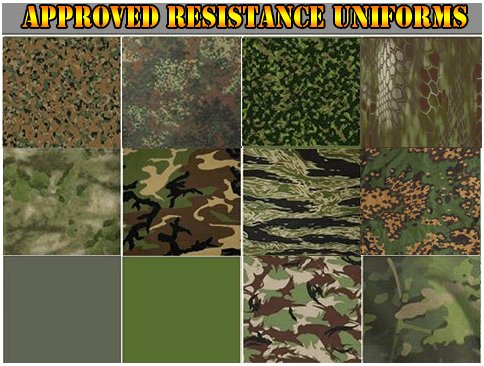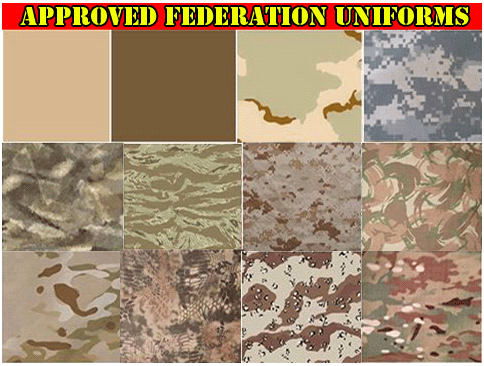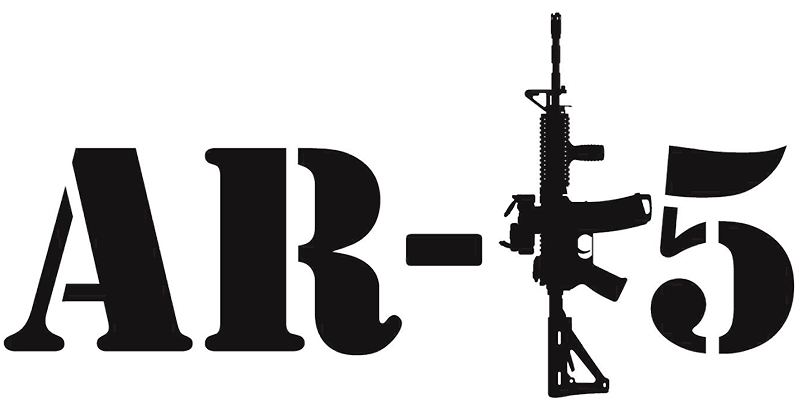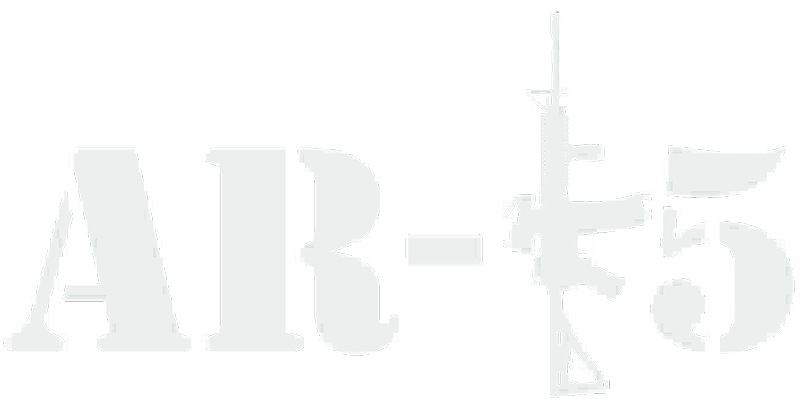Tactical Training Rules for San Antonio, TX
Table of Contents
I. Section 1: Safety & General Rules
● Safety Rules
● Eye Protection
● Replica Safety & Inspection
● Real World Emergencies
● Bindings
● General Rules
● Age Requirements
● Surrender & Bang Rules
● No Conflict Rule
II. Section 2: Uniform Expectations & Packing List
● Uniform Expectations
● General Uniform Requirements
● Resistance (Green Forces) Uniform Requirements
● Federation (Tan Forces) Uniform Requirements
● Civilian Forces
● Uniform Exceptions
III. Section 3: Weapon Rules
● Replica & Ammunition Restrictions
● Replica Rules
● Joule Limits
● Minimum Engagement Distances
● Ammunition Restrictions
● Melee Weapons
IV. Section 4: Casualties, Medical, and Armor Rules
● Casualties, Medical, and Armor Rules
● Dead Rags & Dead Lights
● Event Casualties
● Carrying ‘Wounded’ Participants
● Medical Aid & Armor
● Casualty Collection Points (CCP)
● Forward Operating Bases (FOB)
● Searching Other Participants
V. Section 5: Vehicle Rules
● Vehicle Rules
● Staff Vehicles
● Simulated Aircraft
● Participant Vehicles
VI. Section 6: Force Organization & Responsibilities
● Force Organization & Responsibilities
● Force Organization
● Roles & Responsibilities
VII. Section 7: Radio Communications
● Radio Communications
● Call signs
● Enemy Radio Frequencies
Military Simulation Safety Rules
1.1 EYE PROTECTION
a. Eye protection (eye pro) must be worn at all times without exception; awake or asleep you must have eye pro on. AR-15 Milsim will not be responsible for injuries caused by participants who take their eye pro off during the event. Eye protection must meet ANSI Z87.1 standards and must make a reasonable seal around the wearer’s eyes. AR-15 Milsim staff reserves the right to refuse any eye protection at any time that they deem unsafe.
1.2 REPLICA SAFETY & INSPECTION
a. All replicas used at AR-15 Milsim events must adhere to the following guidelines:
● Be a 6mm airsoft replica. ● Not be a BB gun or modified BB gun.
● Be an airsoft approved replica explosive (Thunder B, Tag, Tornado, etc.) ● Capable of being put on “safe.”
b. All replicas used in AR-15 Milsim events must chronograph and be tagged by an AR-15 Milsim staff before use in the event.
c. While in a “staging area” replicas must be placed on “safe” or holstered.
d. All replicas should be cleared before entering a “safe area” or at the conclusion of an event. Clearing procedures are outlined in section 3.
1.3 REAL-WORLD EMERGENCIES
a. Should a real-world emergency arise, participants are required to advise everyone in their vicinity by exclaiming, “BLIND MAN!”
b. If a player hears “BLIND MAN,” they should immediately stop where they are and put their replica on “safe.”
c. “BLIND MAN” should be called when a player has been injured, they have an eye protection malfunction, or a participant sees an immediate hazard in the event that could place others in danger of injury.
1.4 BINDINGS
a. No participants shall be bound by any device, rope, or zip tie.
b. Roleplaying staff may be “bound” as long as the below stipulations are met:
● The roleplaying staff member must allow it.
● The roleplaying staff member’s hands must be bound in the front. It is unauthorized to bind anyone’s hands behind their back.
● The bindings must be loose and easily escapable for the roleplaying staff member. Roleplaying staff will not attempt to escape despite the loose bindings. This is solely for safety reasons.
● If devices such as handcuffs are used, the device must have a “safety” mechanism that allows for the roleplaying staff member to remove or loosen the device as needed.
General Tactical Training Rules
1.5 AGE REQUIREMENTS
a. The minimum age to attend is 14. Players between the ages of 14 and 17 must be accompanied by an adult of 18 years or older during the event. The accompanying adult will be held responsible for the under-age player’s actions.
1.6 SURRENDER & BANG RULES
a. Surrender or “Bang” rules are NOT used at AR-15 Milsim events.
1.7 NO CONFLICT RULE
a. The No Conflict Rule is intended to drive comradery through the community, prevent escalation of situations, and allow other participants to continue enjoying the event.
b. AR-15 Milsim staff and leadership are the only authoritarian figures in the event. As a participant, you do not have any authority over another participant.
c. No participant shall attempt to resolve an issue with another participant themselves and will instead seek out an admin to resolve the issue. This helps prevent ruining the experience for other participants as well as preventing the situation from possibly escalating.
d. No participant shall yell or scream at another player unless in jest.
e. No participant shall call another participant’s “hits.” If a participant is not following the rules, they should be brought to a staff member’s attention.
f. No participant shall threaten other participants whether verbally or physically, such as posturing. Threatening another participant results in immediate ejection from the event.
g. No participant shall conduct violence on another participant. Violence towards another participant during an AR-15 Milsim event is an immediate ejection from the event.
h. Public shaming of other participants via online media sources may result in a ban from future AR-15 Milsim events. If there is a problem during the event, bring it to the staff’s attention so that we may resolve it.
Section 2: Uniform Expectations

2.1 GENERAL UNIFORM REQUIREMENTS
a. Red clothing is reserved for administration and staff only.
b. Blue clothing is reserved for media personnel such as photographers.
c. Factions are identified by their uniform: their shirt, jacket, and pants.
d. Gear such as plate carriers, chest rigs, helmets, backpacks, and so on are allowed to be any color or pattern. However, participants are encouraged to wear gear that aligns with their faction’s uniform patterns and colors.
e. All eye and face protection must match the military style and the AR-15 Milsim atmosphere. Stylish or character masks are prohibited.
2.2 Resistance (GREEN FORCES) UNIFORM REQUIREMENTS
a. Resistance forces are only authorized to wear uniforms in the following patterns and colors:
● Green (OD/Smoke/Ranger/etc.) ● M81 Woodland
● Woodland MARPAT ● CADPAT
b. All wet/cold weather uniforms must meet the requirements set in place by section 2.3a.
c. Uniforms must consist of matching tops and bottoms with the exception of solid colors and wet/cold weather clothing.
2.3 Civilian FORCES
a. Should an event call for civilian forces, they will be dressed as described below:
● No military style/cut clothing ● American civilian clothing
● European civilian clothing ● Middle Eastern clothing
● Black clothing
b. Civilian uniforms may be mismatched.

2.4 Federation (TAN FORCES) UNIFORM REQUIREMENTS
a. Federation forces are only authorized to wear uniforms in the following patterns and colors:
● Tan (coyote tan/coyote brown/etc.)
● Multicam (original only)
● Desert MARPAT
● 3/6 Color Desert
b. All wet/cold weather uniforms must meet the requirements set in place by section 2.3a.
c. Uniforms must consist of matching tops and bottoms with the exception of solid colors and wet/cold weather clothing.
2.5 UNIFORM EXCEPTIONS
a. Participants may apply for an exception to uniform requirements, requesting a unique camouflage pattern as long as they meet the following stipulations:
● The camouflage pattern must be approved by AR-15 Milsim administration prior to the event.
● The camouflage must match their faction’s base color: green for Resistance, tan for Federation.
● A squad leader must request the exception through email.
● The entire squad must wear the camouflage uniform, top and bottom.
Section 3: Weapon Rules
3.1 GAS BLOWBACK (GBB) CLEARING PROCEDURE
a. Point the replica into the clearing barrel.
b. Place the safety lever in the SAFE position.
c. Remove the magazine from the replica.
d. With the replica pointing into the clearing barrel, pull the bolt to the rear, then remove any chambered BB.
e. Ride the bolt forward.
f. Place the replica on FIRE.
g. Pull the trigger.
h. Pull the bolt to the rear and lock it into place.
i. Look into the chamber to ensure that it is empty.
j. Ride the bolt forward.
k. Recock the replica and place it on SAFE.
3.2 AUTOMATIC ELECTRIC GUN (AEG) CLEARING PROCEDURE
a. Point the replica into the clearing barrel.
b. Place the replica on SAFE.
c. Remove the magazine from the replica.
d. Place the safety lever in the FIRE position.
e. With the replica pointing into the clearing barrel, pull the trigger five times to clear any remaining BBs in the chamber.
f. Place the replica on SAFE.
g. Disconnect the battery.
3.3 AMMUNITION STATUSES:
a. RED: Round chambered and magazine loaded.
b. YELLOW: Magazines loaded and chamber clear.
c. GREEN: Magazine out and chamber clear.
NOTE: Do not carry your weapon on anything but “safe” – you will transition only when prepared to fire.
NOTE: Point weapon into clearing barrels or safe directions for all steps.
Replica & Ammunition Restrictions
3.4 REPLICA RULES
a. All replicas must fire on semi-auto. Machine guns are the only exception to this rule and may fire full auto.
b. Machine gun replicas must have a real world counterpart.
c. Designated marksman rifles must have an inner barrel of at least 500 mm and a magnified optic installed.
d. Sniper rifles must be bolt action, have an inner barrel of at least 500 mm, and a magnified optic installed.
e. Squads may only have 2 grenadiers.
f. Squads may only have 2 automatic riflemen/machine gunners.
g. Participants using a machine gun, designated marksman rifle, or sniper rifle are required to carry a sidearm that meets the criteria in section 3.5a.
h. Replica melee weapons, such as knives or tomahawks, must be a rubber or plastic training replica without sharp edges.
3.5 JOULE LIMITS/JOULE LIMITS & MINIMUM ENGAGEMENT DISTANCE
ALL WEAPON CLASSES WILL BE SUBJECT TO MINIMUM ENGAGEMENT DISTANCES (MEDS)
a. Rifle/Pistol: 366FPS and below with .25g or 1.55 joule = o med (400 and below with .20).
Shooting FULL AUTO=20 ft MED
b. Machine guns/special weapon classes (SAW): 402 FPS and below with .25g BBor 1.87j= 50 ft med.
c. Designated marksman rifles (DMR): 402 FPS and below with .25g BBor 1.87j= 50 ft med.
d. Bolt action sniper rifles are limited between 1.88 and 2.81.
Sniper Class PRE-APPROVED CLASS ONLY! MUST APPLY: Bolt action only 2.31j chrono with own BB
e. HPA special weapon class: 380 FPS .28g or 1.87j= 50 ft med.
FPS limits for this event are hard limit and non negotiable, ZERO EXEMPTIONS
Special weapon/sniper class must carry a Rifleman/Pistol class weapon engage inside specified MED
ALL HPA SYSTEMS WILL BE TOURNAMENT LOCKED BY ZIP TIE
3.6 What is a support weapon at AR-15 Milsim?
a. An airsoft replica can only be classified as a Support Weapon if it accurately resembles a True Support Weapon such as the SAW, PKM, M240, Vulcan, MG36, etc. (grandfathered replicas of BARs, RPK are included). If you have specific questions or additions to this list please contact event Admins at ar15milsim@gmail.com. Support weapons are the only replicas that are allowed to use a “box” magazine at this event. Winding, electric, or spring loaded magazines are all acceptable. Normal mid-caps are not restricted for support weapons.
b. Designated Marksman Rifle is a special purpose weapon and must be a faithful replica of one (optic and barrel length); some examples of a DMR are - M16A4, SR-25, PSG-1, M14/M21, Dragunov (SVD). Bolt action rifles may also function as a DMR as long as they adhere to DMR rules (i.e FPS is under 1.87j). Replicas must be locked in semi only, no full auto allowed.
c. Sniper Rifle requirements: Note: this is a special class designed to be selective and not open to anybody. Must apply by email to ar15milsim.com ahead of time for the role and must have the following requirements:
● Bolt action sniper rifle to not exceed 2.31 j ● Radio ● Battle buddy/ spotter with a rifleman class weapon
3.7 AMMUNITION RESTRICTIONS
a. (4) high capacity or winding magazines are allowed at AR-15 Milsim events.
b. Participants are not authorized to carry any loose BBs on their person in any way. This includes BBs held in speed loaders. Participants found with loose BBs on their person will be ejected from the event.
c. All BBs will be submitted to their faction’s command to be stored in a platoon or squad box depending on the size of the event. Participants may only reload their replicas at their faction’s designated FOB, typically before or after a mission. Participants, especially leadership, are encouraged to keep a close eye on their unit’s ammunition reserves.
d. BBs submitted to supply must be labeled with tape and Sharpie with the participant’s name, faction, platoon, and squad. Example: John Doe, Resistance, 1-1.
3.8 MELEE WEAPONS
a. Melee weapons may be used to ‘kill’ another participant but must follow the guidelines listed below:
● The replica melee weapon should only be used to tap on other participants. Do not stab at other participants.
- Melee weapons must be used from behind an unsuspecting enemy participant. Melee weapon strikes to the front or sides of an enemy do not count or on an aware opponent do not count.
Section 4: Casualties, Medical & Armor Rules
4.1 DEAD RAG & DEAD LIGHT
a. During daylight hours, all participants are required to have a red piece of cloth (dead rag) on their person at any given time.
b. During nighttime hours, all participants are required to have a red light glow-stick (dead light), either chemical or electric, on their person at any given time.
4.2 EVENT CASUALTIES
a. Participants struck by a BB from a replica, in the kill radius of a replica explosive, tapped by a melee weapon from behind, or otherwise instructed by AR-15 Milsim staff, must immediately exclaim “HIT!” and are then considered “wounded.” “Wounded” participants are required to have a dead rag or dead light clearly visible.
b. Role playing, acting out, moaning, or calling for medical aid is permitted while “wounded.”
c. “Wounded” participants are not allowed to communicate ongoing event information such as enemy locations, enemy numbers, or any other information that may aid still “living” players in the event.
d. “Wounded” participants must serve a minimum of five minutes as “wounded” as a “bleed-out” time before declaring themselves “dead.” However, there is no maximum time limit for a participant to “bleed out.”
e. “Dead” participants are considered no longer an active participant in the event and may only be “revived” by a medic at a casualty collection point (CPP).
f. ‘Wounded’ participants are highly encouraged to perform some form of roleplaying when “hit.”
4.3 CARRYING ‘WOUNDED’ PARTICIPANTS
a. “Wounded” participants may be dragged to safety for “first aid” but must follow the below guidelines:
Inform the “wounded” participant you wish to “carry” them and acquire the “wounded” participant’s approval.
Two other “alive” participants must be used to “carry” a “wounded” participant.
b. The only authorized “carry” for “wounded” participants is the with the “wounded” participant’s feet on the ground, capable of holding their own weight, and with both arms slung over the two “carrying” participant’s shoulders.
c. If one of the “carrying” participants is “wounded”then the other “carrying” participant must immediately stop moving with the “carried” “wounded” participant and “drop” him.
d. If contact between the “wounded” participant and either of the “carrying” participants is broken then the “wounded” participant must remain in position until that connection is reestablished.
4.4 MEDICAL AID & ARMOR
a. Participants who are “wounded” may be “revived” by other players by the use of bandages or tourniquets. Bandages or tourniquets may be used from either the “dead” participant or the “alive” participant. It is suggested that players keep their own bandages or tourniquets. The bandages or tourniquets must be placed around the “wounded” player’s arms and be clearly visible.
b. Participants are forbidden from “reviving” themselves. Another participant must do this.
c. All participants may be “revived” 2 TIMES by default.
d. if searched you must give up one card or any Intel per death
e. Participants who “die” are encouraged not to provide information to others that they learned before “dying.” For example, if you see an enemy sniper but fail to disclose this information to others before “dying” then you should refrain from telling others after “respawning.”
f. “Wounded” participants may be carried to a casualty collection point to be “revived” prior to the five minute “bleed-out” time
4.5 CASUALTY COLLECTION POINTS (CCP)
a. Dead participants may “respawn” at casualty collection points where a medic is stationed.
b. Casualty collection points (CCP) are a location designated by command that function as a “respawn” for “dead” participants. A CCP must include the following items/elements.
● One canopy tent.
● One cot, located under the canopy tent.
● One five-gallon water cooler with potable water.
● A stake planted in the front of the tent with a medical cross displayed on it.
c. When a CCP is set up, a platoon or company medic must approve the CCP. Once the CCP is approved, the medic will then place the stake and flag or paper displaying a medical cross. CCPs with this stake showing are considered active, and other participants are able to “respawn” there. CCPs without stakes are no longer viable “respawn” locations.
d. If the medic leaves the CCP, they must take their stake displaying the medical cross with them.
e. If the medic is “wounded,” they will immediately remove the stake displaying the medical cross.
f. If the CCP is being actively engaged by enemy forces, such as enemy fire hitting the CCP, then the medic will immediately remove the stake displaying the medical cross.
g. A medic must wait five minutes with no enemy contact on the CCP to replace the stake displaying the medical cross.
4.6 FORWARD OPERATING BASES (FOB)
a. Forward operating bases (FOB) are considered off limits and provide a headquarters for command, a location to set up camp for participants, and the place from which units will deploy.
b. No shooting or engagements are allowed while in the FOB. Weapons must be cleared and placed on “safe” while in the FOB.
c. Participants are suggested to set up tents within their FOB.
d. While FOBs are considered off limits, participants are still required to wear eye protection at all times while in the FOB unless inside a tent.
4.7 SEARCHING OTHER PARTICIPANTS
a. Participants are allowed to search other “wounded” participants while the other participant is in their five minute “bleed-out” period.
b. Participants are allowed to search other “dead” participants that are moving towards their CCP as long as the “dead” participant is within the immediate controlled area. “Dead” participants told to stop by enemy forces are required to do so within a reasonable amount of distance and time. For example, should enemy forces cross your path while you are returning to your CCP, they are authorized to demand you stop and search you. However, if you are moving to your CCP through friendly forces and an enemy participant yells at you to stop from behind enemy lines, you may continue to your CCP.
c. To conduct a search the participant must acquire the “wounded” or “dead” participant’s consent first.
d. If a “wounded” or “dead” participant consents to being searched, the searching participant may then go through the “wounded” or “dead” participant’s belongings to include their gear, clothing, and backpacks. Searching participants are expected to be respectful with other participant’s belongings while searching. Do not simply turn a backpack upside down and empty the belongings onto the ground.
e. If denied consent or consent is retracted at any time during a search (even after consent has been given), then the searching participant must immediately stop searching through the “wounded” or “dead” participant’s belongings. The “wounded” or “dead’ participant must then provide any items to the searching participant as requested, such as radios, maps, notebooks, playbooks, etc.
f. Searching participants are allowed a reasonable amount of time to copy down details from items found on the “wounded” or “dead” player.
Section 5: Vehicle Rules
5.1 STAFF VEHICLES
a. Staff vehicles such as cars or trucks will be marked by a red piece of paper or light displayed on the front, back, left, and right of the vehicle. Staff vehicles such as four wheelers or motorcycles will be marked by the operator wearing a red shirt, dead rag, or dead light.
b. Staff vehicles are considered out of the event and are not to be fired upon or used as cover.
5.2 SIMULATED AIRCRAFT
a. Some vehicles may be used in the event to simulate various forms of aircraft. These vehicles will be marked with a paper on the front, back, left, and right of the vehicle, showing a circle split vertically and horizontally with the upper right and lower left most sections filled in black as shown below. This symbol is designed to look like a moving rotor as seen from above and to be easily identifiable.
b. Simulated aircraft are considered immune to all forms of damage.
c. Simulated aircraft are not allowed to “land” in any areas containing “anti air.”
d. Simulated aircraft must “land” to pick-up or drop-off participants. “Landing” consists of coming to a complete stop.
e. Participants are forbidden from firing out of or into any vehicles marked as a simulated aircraft.
f. Participants exiting the simulated aircraft vehicle are not considered ‘in play’ until they have their feet touch the ground.
Section 6: Force Organization & Responsibilities
6.1 COMPANY COMMANDER (CO)
● Is responsible for everything and everyone in the company
● Commands subordinate leadership
● Establishes standard operating procedures (SOP)
● Issues operation orders (OPORD) for tactical operations
6.2 EXECUTIVE OFFICER (XO)
● Second in command
● Manages quick response force (QRF)
● Performs duties as directed by the CO
6.3 SQUAD LEADER (SQL)
● Controls the squad’s fire and movement
● Conducts close range combat with enemy forces
● Conducts PPCs and PCIs
● Ensures every member of the squad knows the mission and their part in it
6.4 FIRE TEAM LEADER (FTL)
● Ensures his team fulfills their sectors of the mission
● Enforces discipline
● Determines the team’s combat load and reports needs up the chain of command
● Understands the mission from their part, the squad leader’s part, and the platoon leader’s part
6.5 RIFLEMAN (RM)
● Constructs and occupies hast firing positions
● Engages enemy forces in close quarters battle (CQB)
● Breaches buildings
6.6 GRENADIER (GR)
● Carries the fire team’s 40mm grenade launcher
● Accomplish all tasks given to the rifleman
● Engages enemy vehicles with appropriate ammunition
● Engages enemy fortifications with appropriate ammunition
● Able to judge and readjust the aim of a 40mm grenade to destroy targets
6.7 AUTOMATIC RIFLEMAN (AR)
● Carries the fire team’s machine gun
● Engage groups of enemy personnel, bunkers, and vehicles
● Provides suppressive fire upon enemy forces
● Provide the fire team and squad with fire superiority
6.8 DESIGNATED MARKSMAN (DMR)
● Carries the fire team and the squad’s designated marksman rifle
● Provides the fire team and squad with accurate fire
● Eliminates unique enemy targets
Section 7: Radio Communications
7.1 RADIO PROCEDURES
a. The company RTO will issue the SOPs for radio communication.
7.2 CALL SIGNS
a. Call signs to be used on the net will be specified before the event by leadership.
7.3 ENEMY RADIO FREQUENCIES
a. Command for each faction is authorized to listen to enemy radio frequencies.
b. Participants are not authorized to transmit or interfere in any way with the radio communications or frequencies of enemy forces.
*AR-15 Milsim reserves the right to change any of these rules and communicate them to our participants during the event to ensure the high quality and safety of our event is maintained.

